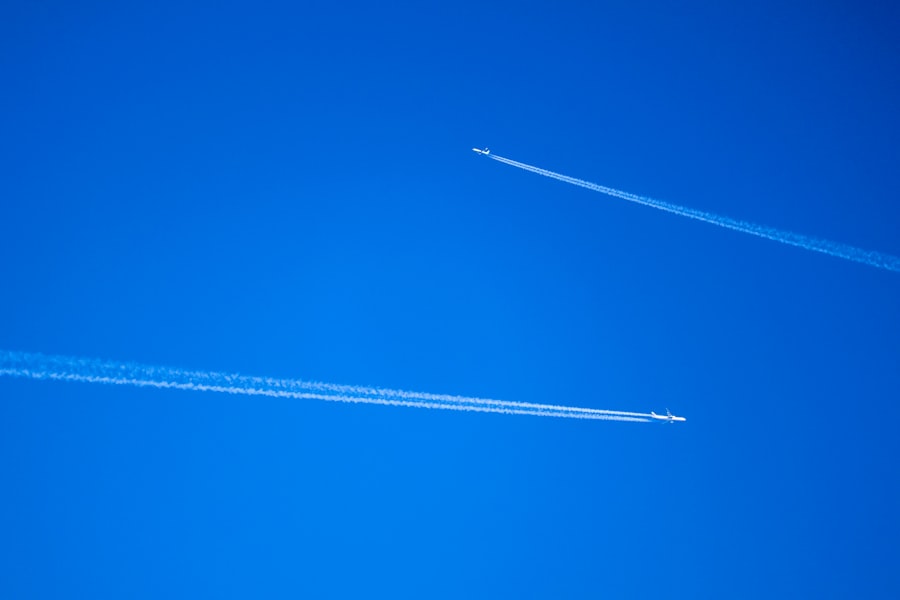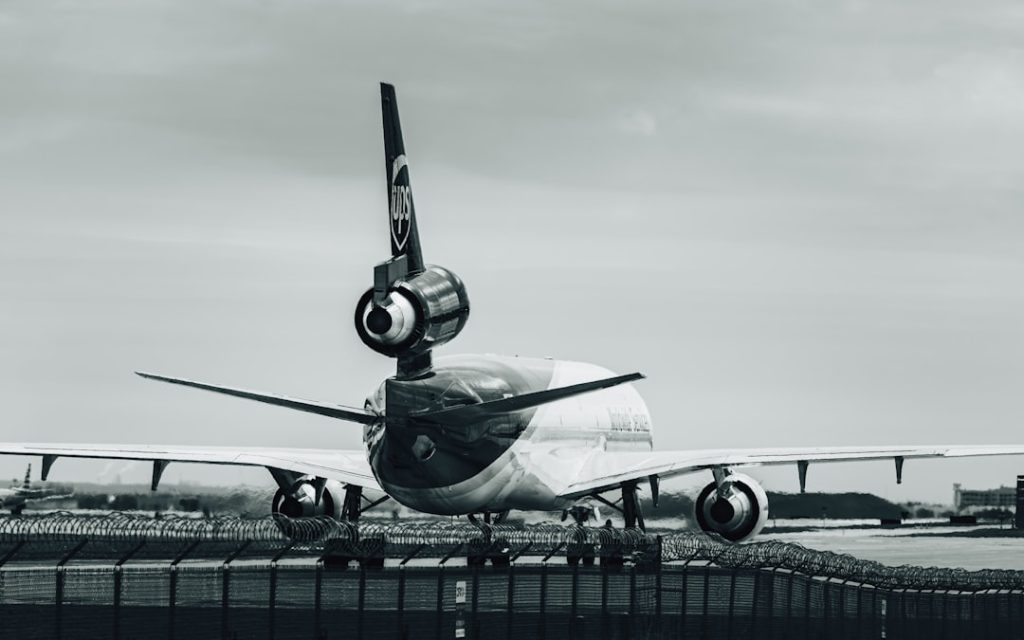The aviation industry stands as a cornerstone of global connectivity, facilitating the movement of people and goods across vast distances in a matter of hours. At the heart of this dynamic sector are the top aviation companies, which not only shape the landscape of air travel but also drive economic growth and innovation. These companies range from commercial airlines to aerospace manufacturers, each playing a pivotal role in the intricate web of air transport.
The significance of these players extends beyond mere transportation; they are integral to international trade, tourism, and even humanitarian efforts, making their impact felt on a global scale. In recent years, the aviation industry has witnessed remarkable transformations, driven by advancements in technology, changing consumer preferences, and evolving regulatory landscapes. The top aviation companies have adapted to these changes, striving to enhance operational efficiency, improve passenger experiences, and address pressing environmental concerns.
As we delve deeper into the history and current state of the aviation industry, it becomes evident that these companies are not just participants in a competitive market; they are innovators and leaders shaping the future of air travel.
Key Takeaways
- The aviation industry has evolved significantly, shaped by major companies and historical milestones.
- Leading aviation companies drive innovation and technological advancements in air travel.
- Environmental sustainability is becoming a key focus for aviation firms worldwide.
- The COVID-19 pandemic had a profound impact on aviation operations and business models.
- Future trends point toward increased technology integration and greener, more efficient air travel solutions.
History of Aviation Industry
The history of the aviation industry is a fascinating narrative that traces its roots back to the early 20th century. The Wright brothers’ successful flight in 1903 marked a pivotal moment in human history, igniting a passion for flight that would evolve into a complex industry. Following this breakthrough, the first commercial airline, St.
Petersburg-Tampa Airboat Line, was established in 1914, offering scheduled flights across Tampa Bay. This nascent stage of aviation was characterized by small aircraft and limited routes, primarily serving wealthy individuals and cargo transport. As World War I unfolded, aviation technology advanced rapidly, with military applications driving innovation.
The post-war era saw the emergence of commercial aviation as a viable mode of transportation. The 1920s and 1930s witnessed the establishment of several airlines, including Pan American Airways and Transcontinental Air Transport, which expanded routes and introduced air mail services. The introduction of larger aircraft and advancements in navigation technology further propelled the industry forward.
By the mid-20th century, commercial aviation had become more accessible to the general public, leading to a surge in passenger numbers and the establishment of regulatory bodies to ensure safety and standardization.
Major Players in the Aviation Industry

The aviation industry is characterized by a diverse array of major players that contribute to its complexity and dynamism. Among these are prominent airlines such as Delta Air Lines, American Airlines, and Emirates, which dominate the commercial passenger market. These airlines operate extensive networks that connect cities across continents, offering various classes of service to cater to different traveler needs.
Their fleets consist of modern aircraft equipped with advanced technology to enhance safety and comfort. In addition to airlines, aerospace manufacturers like Boeing and Airbus play a crucial role in shaping the industry. These companies design and produce commercial aircraft that meet the demands of airlines while adhering to stringent safety regulations.
Boeing’s 737 and Airbus’s A320 families have become staples in the fleets of airlines worldwide due to their efficiency and reliability. Furthermore, companies like Bombardier and Embraer focus on regional jets, providing solutions for smaller markets and connecting underserved routes. The aviation supply chain also includes maintenance, repair, and overhaul (MRO) providers that ensure aircraft remain airworthy throughout their operational life.
Companies such as Lufthansa Technik and GE Aviation offer specialized services that are essential for maintaining safety standards and operational efficiency. Together, these major players create a robust ecosystem that supports the global aviation industry.
Innovations and Technological Advancements in Air Travel
| Innovation/Technology | Description | Impact on Air Travel | Year Introduced | Example |
|---|---|---|---|---|
| Jet Engines | Powerful engines that use jet propulsion for faster speeds and higher altitudes. | Reduced travel time, increased range and efficiency. | 1930s-1940s | Rolls-Royce Merlin, General Electric J79 |
| Fly-by-Wire Systems | Electronic flight control systems replacing manual controls. | Improved safety, precision, and reduced pilot workload. | 1970s | Airbus A320 |
| Composite Materials | Use of lightweight carbon fiber and composites in aircraft structure. | Reduced weight, improved fuel efficiency, and durability. | 2000s | Boeing 787 Dreamliner |
| In-Flight Connectivity | Wi-Fi and satellite communication for passenger internet access. | Enhanced passenger experience and operational communication. | 2010s | Gogo Inflight Internet |
| Electric and Hybrid Propulsion | Use of electric motors or hybrid systems to reduce emissions. | Lower environmental impact and fuel consumption. | 2020s (emerging) | Airbus E-Fan X (prototype) |
| Autonomous Flight Systems | Automation and AI for pilot assistance and potential pilotless flights. | Increased safety, efficiency, and potential cost reduction. | 2020s (development ongoing) | Unmanned Aerial Vehicles (UAVs) |
| Supersonic Travel | Aircraft capable of flying faster than the speed of sound. | Significantly reduced long-distance travel times. | 1960s (Concorde), 2020s (new projects) | Concorde, Boom Supersonic |
Technological advancements have been at the forefront of transforming air travel over the past few decades. Innovations in aircraft design have led to significant improvements in fuel efficiency, safety, and passenger comfort. For instance, the introduction of composite materials in aircraft construction has reduced weight while enhancing structural integrity.
The Boeing 787 Dreamliner and Airbus A350 are prime examples of this trend, featuring advanced aerodynamics and engines that consume less fuel compared to their predecessors. Moreover, advancements in avionics have revolutionized navigation and communication systems within aircraft. The implementation of satellite-based navigation systems has improved accuracy in flight paths, reducing delays and enhancing safety.
Additionally, innovations such as fly-by-wire technology have streamlined cockpit operations, allowing pilots to manage complex systems with greater ease. These technological strides not only enhance operational efficiency but also contribute to a more enjoyable travel experience for passengers. The rise of digital technology has also transformed customer interactions within the aviation sector.
Airlines have embraced mobile applications and online platforms to streamline booking processes, provide real-time flight updates, and enhance customer service. Innovations such as biometric screening at airports have expedited security checks, improving overall efficiency in air travel. As technology continues to evolve, it is likely that we will see further enhancements in areas such as artificial intelligence and machine learning, which could revolutionize everything from predictive maintenance to personalized passenger experiences.
Environmental Initiatives and Sustainability Efforts
As concerns about climate change intensify, the aviation industry faces increasing pressure to adopt sustainable practices. Major players within the sector are actively pursuing environmental initiatives aimed at reducing their carbon footprint. Airlines are investing in more fuel-efficient aircraft that produce fewer emissions per passenger mile.
For example, both Boeing and Airbus have committed to developing next-generation aircraft that utilize sustainable aviation fuels (SAFs) derived from renewable sources. In addition to fleet modernization, airlines are implementing operational strategies designed to minimize environmental impact. This includes optimizing flight paths to reduce fuel consumption and adopting more efficient ground operations at airports.
Some airlines have also initiated programs to offset their carbon emissions through investments in reforestation projects or renewable energy initiatives. Furthermore, regulatory bodies are increasingly mandating sustainability measures within the aviation sector. The International Civil Aviation Organization (ICAO) has set ambitious targets for reducing greenhouse gas emissions from international aviation by 50% by 2050 compared to 2005 levels.
This has prompted airlines to collaborate on research initiatives aimed at developing new technologies and practices that align with these goals. The commitment to sustainability is not merely a response to regulatory pressures; it reflects a broader recognition within the industry that long-term viability hinges on addressing environmental challenges.
Impact of COVID-19 on Aviation Companies

The COVID-19 pandemic has had an unprecedented impact on the aviation industry, leading to widespread disruptions that challenged even the most resilient companies. As countries implemented travel restrictions and lockdown measures to curb the spread of the virus, airlines faced an immediate decline in passenger demand. In 2020 alone, global air traffic plummeted by over 60%, resulting in significant financial losses for many carriers.
In response to this crisis, aviation companies adopted various strategies to navigate the turbulent landscape. Many airlines implemented cost-cutting measures such as workforce reductions, fleet grounding, and renegotiating contracts with suppliers. Governments around the world also stepped in with financial aid packages aimed at stabilizing the industry during this challenging period.
For instance, the U.S. government provided billions in aid through programs like the Payroll Support Program to help airlines retain employees. As travel restrictions began to ease in 2021, airlines faced the challenge of rebuilding consumer confidence while adapting to new health protocols.
Enhanced cleaning measures onboard aircraft became standard practice, along with mandatory mask-wearing for passengers and crew members. The introduction of digital health passports aimed at verifying vaccination status further facilitated safe travel as countries reopened their borders. While recovery remains ongoing, it is clear that COVID-19 has reshaped operational practices within the aviation sector for years to come.
Future Trends and Developments in Air Travel
Looking ahead, several trends are poised to shape the future of air travel as the industry emerges from the shadows of the pandemic. One significant trend is the increasing focus on sustainability and green technologies. As airlines strive to meet ambitious emissions reduction targets, investments in electric and hybrid aircraft are gaining momentum.
Companies like Wright Electric are developing all-electric planes designed for short-haul flights, while major manufacturers explore hybrid propulsion systems that could revolutionize regional travel. Another trend is the integration of advanced technologies into airport operations and passenger experiences. The rise of automation is expected to streamline processes such as check-in and baggage handling, reducing wait times for travelers.
Additionally, artificial intelligence will play a crucial role in enhancing customer service through chatbots and personalized recommendations based on traveler preferences. Furthermore, as remote work becomes more prevalent, there may be shifts in travel patterns with increased demand for leisure travel over business trips. Airlines may need to adapt their offerings accordingly by providing flexible booking options and tailored experiences for leisure travelers seeking unique destinations.
The Future of Aviation Companies
The future of aviation companies is marked by both challenges and opportunities as they navigate an evolving landscape shaped by technological advancements, environmental imperatives, and changing consumer behaviors. While the industry has faced significant setbacks due to COVID-19, it has also demonstrated remarkable resilience and adaptability in response to unprecedented circumstances. As we look forward, it is clear that innovation will remain at the forefront of air travel’s evolution.
From sustainable practices aimed at reducing environmental impact to technological advancements enhancing operational efficiency and passenger experiences, aviation companies are poised to redefine what it means to fly in a rapidly changing world. The commitment to sustainability will not only address pressing environmental concerns but also resonate with consumers increasingly prioritizing eco-friendly choices. In this context, collaboration among stakeholders—airlines, manufacturers, regulatory bodies, and consumers—will be essential for shaping a sustainable future for aviation.
As we embark on this journey toward recovery and growth, one thing remains certain: the spirit of innovation that has driven the aviation industry since its inception will continue to propel it forward into new horizons.




